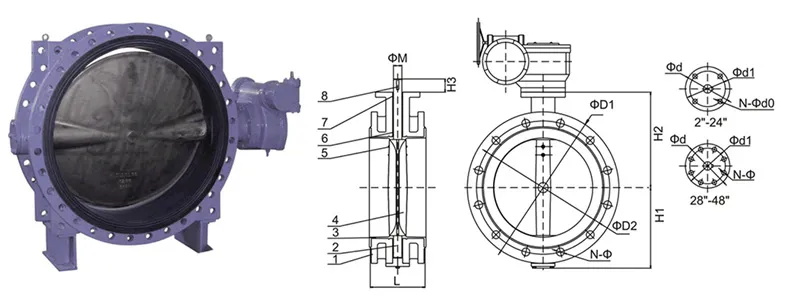lis . 09, 2024 03:26 Back to list
Understanding Non-Return Swing Check Valves and Their Applications in Piping Systems
Understanding Non-Return Swing Check Valves
Non-return swing check valves are essential instruments in various fluid control systems, designed to allow flow in one direction while preventing backflow. Their unique mechanism and functionality make them widely used in numerous industrial applications, from water supply systems to chemical processing and beyond.
Working Principle
The operating principle of a non-return swing check valve is relatively straightforward. It consists of a valve body with a hinge mechanism that allows a disc to swing open or closed. When flow enters the valve from the inlet side, the pressure pushes the disc upward, allowing the fluid to pass through. However, if the flow direction attempts to reverse, the disc swings back into its seat by the force of gravity and the reverse flow pressure, effectively sealing the valve and preventing backflow.
Advantages of Non-Return Swing Check Valves
1. Simplicity and Reliability One of the primary advantages of non-return swing check valves is their simple design, which translates to fewer moving parts. This simplicity leads to high reliability, as there are fewer components that can fail.
2. Low Pressure Drop These valves are designed to minimize pressure loss when in operation. This feature is particularly beneficial in systems where maintaining pressure is critical.
3. Versatility Non-return swing check valves can be used in diverse applications across various industries. They can handle different types of fluids, including water, oil, and gas, making them versatile and valuable in many systems.
4. Cost-Effectiveness The low maintenance requirements and durability of these valves often result in lower overall lifetime costs, making them a cost-effective choice for many applications.
Applications
Non-return swing check valves find applications in a wide range of sectors
- Water and Wastewater Treatment In water treatment plants, these valves prevent backflow, ensuring that treated water does not flow back into untreated sources.
non return swing check valve

- Industrial Processes In chemical and petrochemical industries, they are used in piping systems to prevent backflow of corrosive or hazardous fluids.
- HVAC Systems These valves can be found in heating, ventilation, and air conditioning systems to maintain the correct flow direction and improve system efficiency.
- Irrigation Systems They are utilized to ensure that water flows in one direction, preventing loss and contamination in agricultural applications.
Considerations When Selecting a Non-Return Swing Check Valve
Choosing the right non-return swing check valve for a particular application involves several considerations
1. Material Depending on the type of fluid being transported, the valve must be made from materials resistant to corrosion, wear, and other environmental factors.
2. Size and Pressure Rating The size of the valve should match the pipeline it will be installed in, and it must be rated for the maximum pressure it will encounter during operation.
3. Flow Characteristics Understanding the flow characteristics of the application is critical. The valve should be capable of handling the maximum flow rates without causing significant pressure drops.
4. Installation Orientation Non-return swing check valves should typically be installed horizontally, but specific designs can also accommodate vertical installations, depending on the application and fluid dynamics.
Conclusion
Non-return swing check valves play a critical role in ensuring the efficient and safe operation of fluid systems across various industries. Their simple yet effective design, combined with their ability to prevent backflow, makes them invaluable in maintaining system integrity and performance. When selecting a valve for your specific needs, consider the application requirements and consult with manufacturers to choose the best valve that meets your performance criteria.
Share
-
Reliable Wafer Type Butterfly Valves for Every IndustryNewsJul.25,2025
-
Reliable Flow Control Begins with the Right Ball Check ValveNewsJul.25,2025
-
Precision Flow Control Starts with Quality ValvesNewsJul.25,2025
-
Industrial Flow Control ReliabilityNewsJul.25,2025
-
Engineered for Efficiency Gate Valves That Power Industrial PerformanceNewsJul.25,2025
-
Empowering Infrastructure Through Quality ManufacturingNewsJul.25,2025